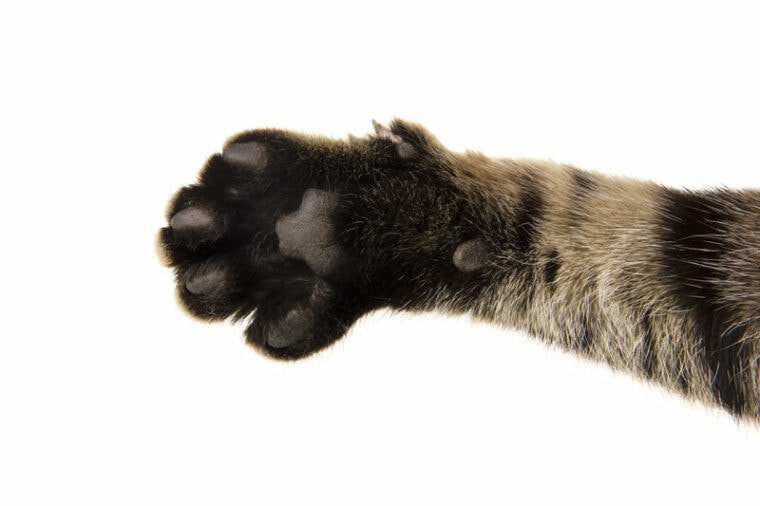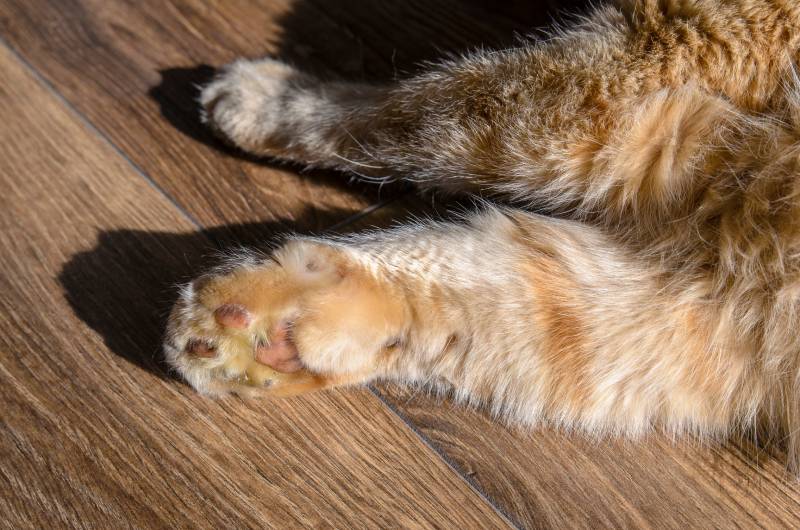
Believe it or not, cats do not just have whiskers on their faces. They have whiskers on their front legs as well! The whiskers on the legs are known as carpal whiskers. Carpal whiskers are located on the back of a cat’s front legs, and unlike the whiskers on a cat’s face, they cannot be voluntarily moved.
It may seem odd that a cat has whiskers on its legs, but the truth is that the carpal whiskers play an important role. Keep reading if you want to learn more about these curious whiskers.
Why Do Cats Have Whiskers on Their Legs?
Carpal whiskers are especially important for hunting prey. Since they are located at the underside of a cat’s forearms, they are particularly useful for sensing anything that may be in a cat’s clutches.
If the cat has caught a mouse between its paws, the carpal whiskers can help to pick up information about the mouse through sensory touch. The size of the mouse, the amount and intensity of movement, and the position of the mouse are all things that a cat’s carpal whiskers can help percieve.
The ability to sense all of this information is important for cats, specifically when they are hunting, because cats struggle to see objects up close. This may sound odd, considering that cats are known to have an excellent nighttime vision as well as great peripheral vision, but it is the truth.
Compared to humans, felines have a significantly lower quality of vision when viewing objects up close. Because they struggle to see in close quarters, cats need to have additional support when investigating the prey between their paws. That is where the carpal whiskers come in.
Not to mention, carpal whiskers are also helpful climbing tools for cats, as they provide sensations of the object or surface being mounted.

What Is the Purpose of Whiskers?
Whiskers, in general, are indispensable for cats. Primarily, whiskers are used as sensory tools to help a cat detect stationary objects. They are especially vital for navigating, hunting, and estimating the size and depth of spaces.
Whiskers also act as radars, signaling to them when something is amiss. Whiskers can detect movement as minimal as weak air currents. This sensitivity helps a cat to be more acutely aware of its surroundings.
Another function of whiskers is balance. If you have ever wondered how cats maintain such graceful balance, their whiskers deserve much of the credit. Special sensors at the end of each whisker allow cats to be aware of each part of their body and maintain balance.
Communicating emotions is another key function of whiskers. When a cat is energized or agitated, their whiskers may twitch or become active. On the other hand, if a cat is feeling relaxed, the whiskers will remain mostly dormant.
Overall, whiskers serve various essential functions and are vital to the well-being of cats.

Conclusion
Though much less known than facial whiskers, Carpal whiskers are still an integral part of a cat’s sensory abilities. They help distinguish friends from prey and allow cats to better understand objects they cannot see. They are just another one of the many fascinating features that cats possess.
Featured Image Credit: foxhound photos, Shutterstock






